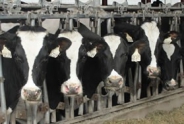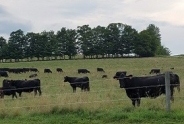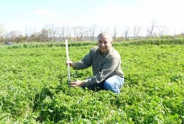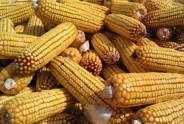Field Crop Update, July 14, 2023
Erik Smith, Area Field Crop Specialist/Team Leader
Central New York Dairy and Field Crops
1. Field Observations
Corn and soybeans are enjoying the increase in rainfall, but our thoughts are with our neighbors who've experienced flooding. If you did not receive (or would like to receive) the resources I shared this Tuesday regarding flooded forages, please let me know and I will send them to you.
According to the 7-day stream flow map, the hardest-hit areas were in eastern and southeastern upstate NY, but our region has also seen extreme precipitation levels this week. These images are courtesy of Jessica Spaccio, Climatologist at the Northeast Regional Climate Center at Cornell:
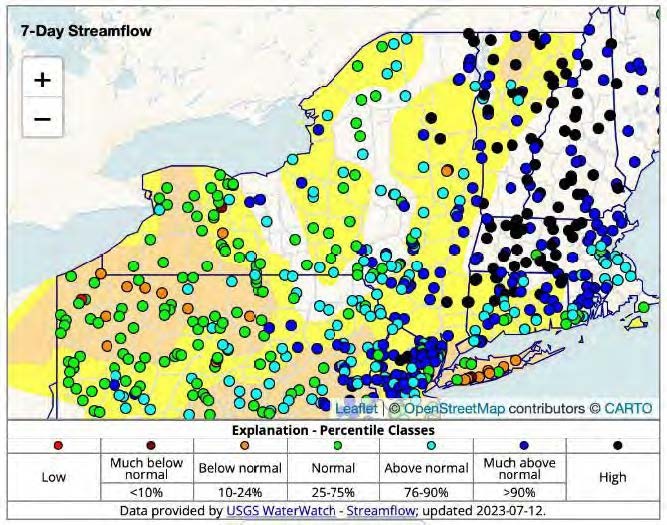



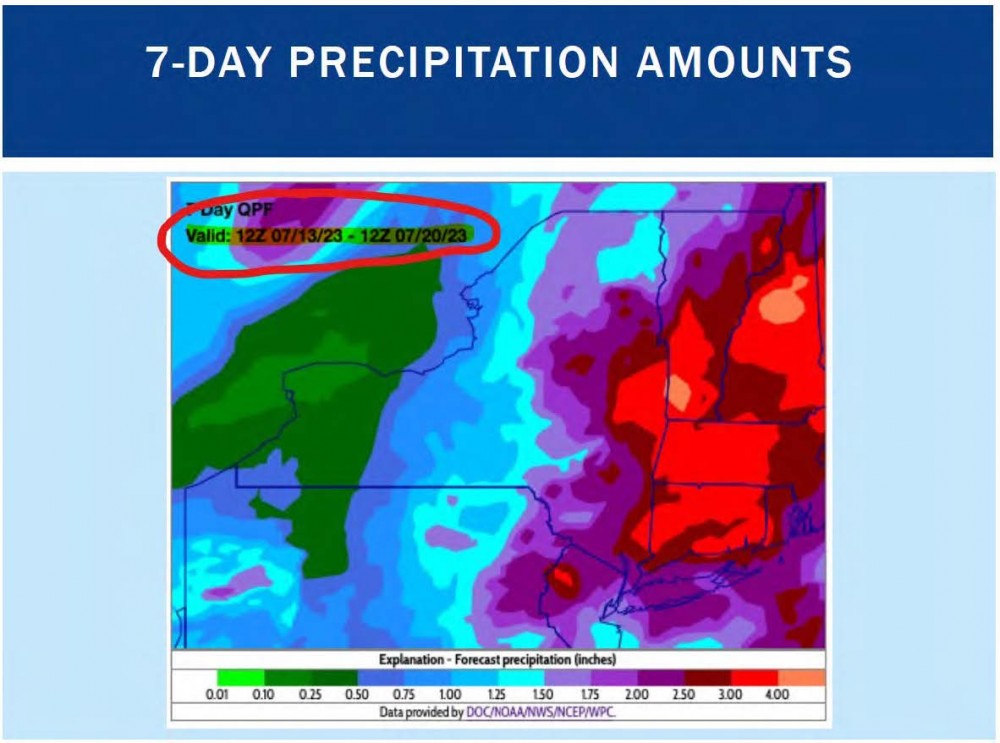
2. Growing Degree Days (See: Climate Smart Farming Growing Degree Day Calculator)
Growing degree days (GDD) are calculated by taking the average daily temperature and subtracting the base temperature for development of a given organism ((High + Low)/2 - base temp = GDD). For corn silage, we are using base 50/86, as corn development starts at 50 degrees F and ceases above 86. Check your location and planting date:
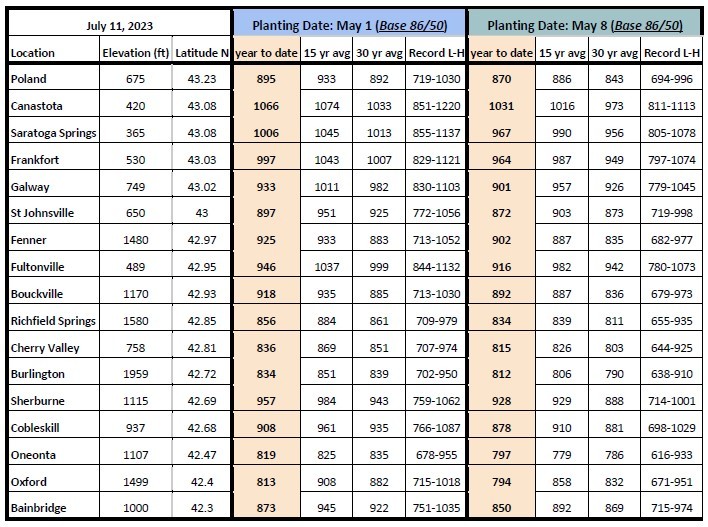
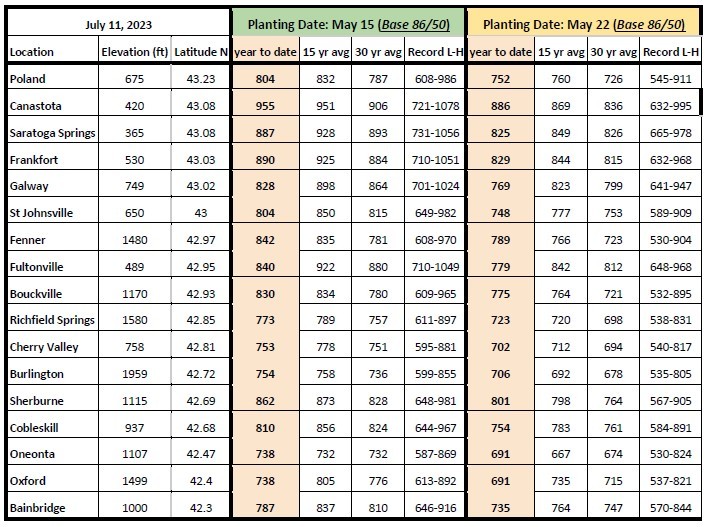
3. Pest and disease monitoring
Western Bean Cutworm (WBC) and Fall Armyworm (FAW) in corn
WBC is hot out of the gate across our region. I scouted the Chenango Co. field with the highest number for WBC egg masses (they prefer to lay eggs on the top surface of the uppermost leaves), but found none. Something to keep an eye on….
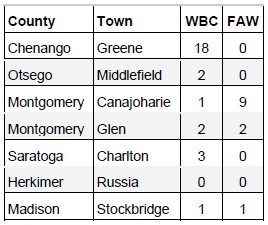
Potato leafhopper (PLH) in alfalfa - Fields swept by Ashley Bound and Emily Anderson, CCE Chenango, who will be working with local FFA chapters across our region to sweep alfalfa fields this year (funding provided by the Chobani Community Impact Fund).

*No action needed if crop is within 1 week of cutting. If not, use a short-residual insecticide.
Upcoming Events
Labor Roadshow IX
December 1, 2025
December 9 - December 10, 2025December 17 - December 18, 2025December 22, 2025
In-person and online events to keep NY's agricultural employers informed and prepared for today's labor challenges.
2026 Dairy Day
January 13, 2026 : Dairy Day - Hamilton
Hamilton, NY
Lunch included
January 14, 2026 : Dairy Day - Ballston Spa
Ballston Spa, NY
Lunch included
2026 Corn & Soybean Day
January 20, 2026 : Corn & Soybean Day - Hamilton
Hamilton, NY
Lunch included. 2.75 DEC Credits available
January 21, 2026 : Corn & Soybean Day - Ballston Spa
Ballston Spa, NY
Lunch included. 2.75 DEC Credits available
Announcements
Statewide Field Crop Pathology Needs Assessment Survey
Your input is wanted for identifying priorities!Sign Up for Our Weekly E-Newsletter
We send out a bi-weekly e-newsletter that has announcements, upcoming programs, and opportunities for you! Registration is quick, easy, and free. Click here to sign up today!Farmers Can Join MeatSuite For Free!
MeatSuite.com is a free resource provided by Cornell University where NY meat farmers can create a farm profile and list their bulk (wholes, halves, quarters) and bundled (i.e. Grilling Bundle) meat products.Why should farmers join?
1. It's free and easy!
2. Connect with more local customers. In the past year the MeatSuite.com farm directory had 8,300 visits from New York consumers. Farm profiles get as many as 25 views per month from potential local customers. We also spotlight MeatSuite farms on social media and bring attention and purchases to farms through highlights and giveaways.
How do I join?
Farmers can visit https://www.meatsuite.com/farmers/ to create a free farm profile. You must list at least one product for your farm's profile to go live. You'll also have access to Cornell's free Meat Price Calculator, a helpful tool for pricing your meat to make a profit.
While you're on MeatSuite, check out the "Creating Consumer-Friendly Bulk Meats" publication on the log-in page. It has tips on how to create bulk meat products that are easier for first-time buyers to say "yes" to.
If you have any questions as you create your farm profile or products, we're here to help! Please email Matt LeRoux at mnl28@cornell.edu.

